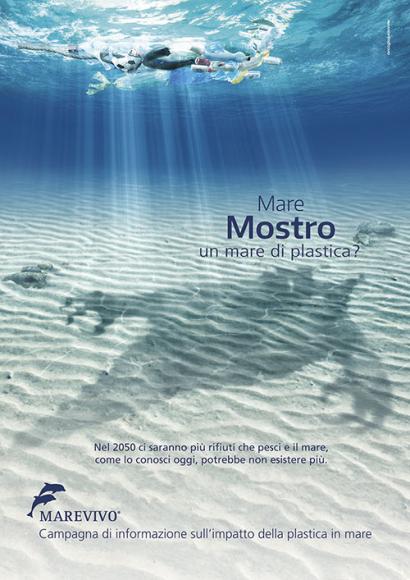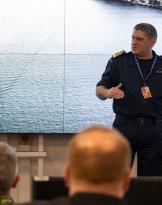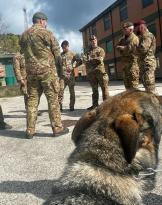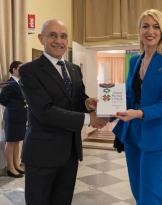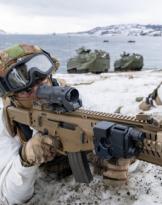Illegal and excessive fishing, oil, poisons of all kinds poured into the sea every day, but it does not end there, there is an apparently unstoppable and indestructible monster that even insinuates itself into the human food chain: plastic.
To understand how to deal with it, Marevivo is carrying out the information, awareness and knowledge campaign "Monster Sea: a plastic sea? ", created in collaboration with the Italian Navy and CoNISMa and left on board the training ship Amerigo Vespucci, during the scheduled stop in Bari for the naval campaign of the 85th anniversary of the launch of the ship.
On the occasion of the next stage of the Vespucci in Venice, Wednesday 18 May at 18.00 pm the meeting on the impact of plastic in the sea is scheduled on board. After the greetings of the ship commander Vespucci Curzio Pacifici and the president of Marevivo Rosalba Giugni, with Roberto Carlucci of the University of Bari and head of the Cetacean Campaign 2016, Nicolò Carnimeo of the University of Bari and author of the book “How deep is the sea”. The students of the Military Naval School "F. Morosini" will participate and the Venetian actress Debora Caprioglio will be the godmother of the meeting.
Countryside "Sea monster: a sea of plastic?"Will unfold between seminars, meetings with young students, debates with administrators and politicians, reclamation actions at the mouths of rivers and even the proposal of an ad hoc law. To support the campaign an informative exhibition, which can be visited aboard the sailing ship, born from Blue Factory di Marevivo and composed of young scholars and researchers, coordinated by the professor of the University "La Sapienza" Giandomenico Ardizzone. The image of theSea monster”Was created by the agency Roncaglia and Wijkander.
Every year 280 million tons of plastic are produced in the world and it is estimated that in 2050 they will become 400. A study by the Foundation is grafted onto this scenario "Ellen macarthur”, Which predicts that for that year there will be more plastics than fish in the sea. According to some research, over 10% of plastic produced is thrown into the sea, going to feed the "Monster".
From the crushing of plastics smaller than a fingernail and confused by plankton from fish to large oceanic eddies of waste, which form the largest "islands" in the entire Mediterranean: these are among the topics that will be addressed by experts and researchers during the trip of the ship.
Then the repercussions on human health must be taken into consideration: microplastics, starting from plankton, enter the food chain and end up with man as the last consumer; how much will our body take?
In addition, chemical additives are used to model plastic, such as phthalates: “if you know them, avoid them”, says a slogan in the exhibition, as they are among the most toxic substances that act on the endocrine system and metabolism.
"We are not allowed to sit on the bench and watch what is happening to our sea", Explains Rosalba Giugni, president and founder of Marevivo,"let's not forget that the sea represents 71% of the planet, produces more than 80% of the oxygen we breathe and absorbs a third of carbon dioxide, when it is in good health. This beneficial function is exercised not only for its salty waters, but because the sea is a 'vital organism', made up of plants and animals in a dynamic balance achieved over millions of years".
Because of plastics, the Mediterranean, a semi-enclosed sea, is also at risk, which takes 80 years to replace its only surface waters. Important rivers flow into its basin, which collect and transport an enormous quantity of plastic waste along their path. It is estimated that there are at least 250 billion plastic fragments scattered throughout the Mare Nostrum, with an average concentration of 0,116 fragments / m2 of surface up to a maximum of over 0,36 fragments / m2.
The Association intends to continue tirelessly, for the next few years, the fight against this Monster and the stakes are too high: the health of the Planet and therefore of man with his traveling companions, dolphins, turtles, are at stake. whales, shrimp, all creatures of the sea. The mad rush of the human being to go beyond all limits and satisfy every need is destroying the primary source of life: the Sea.
The awareness campaign "Sea monster: a sea of plastic?"Nave will follow Vespucci during the 85th Anniversary Campaign.

